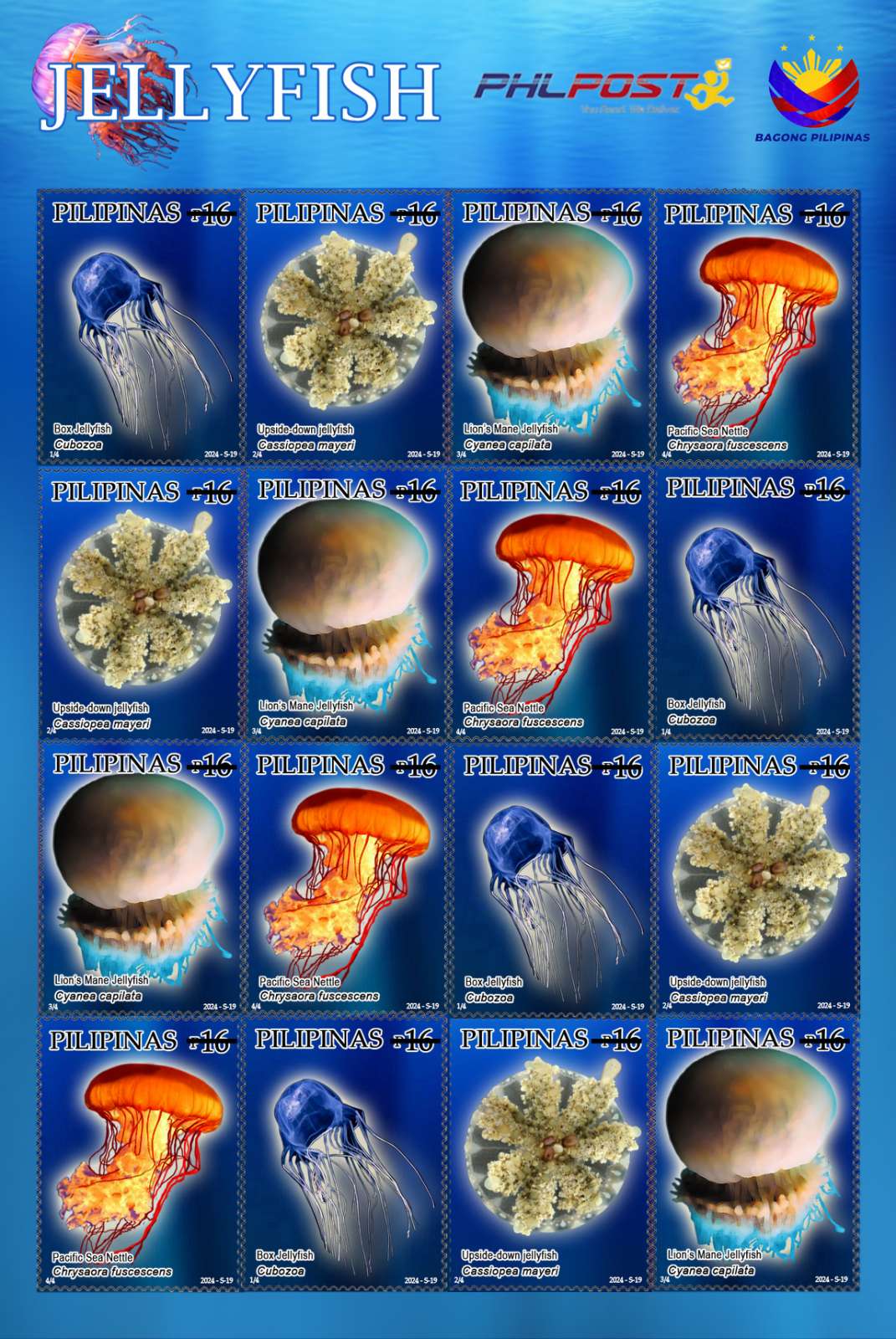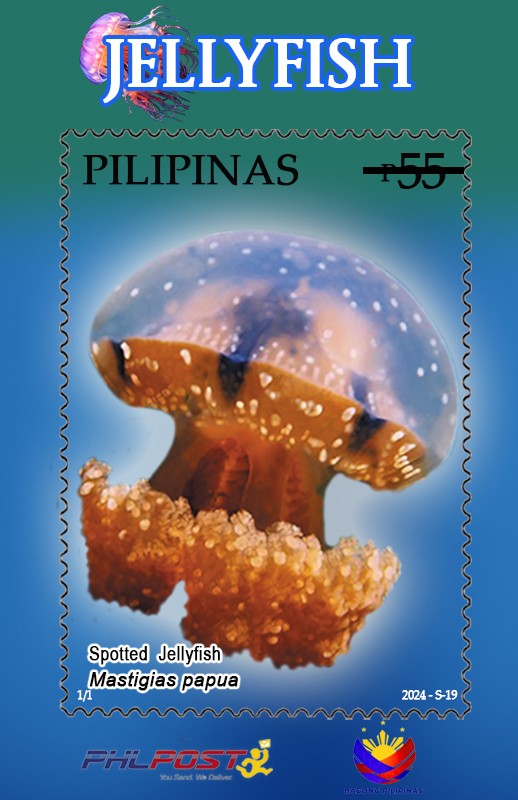
By Dean Aubrey Caratiquet
The Philippines is renowned for hosting an abundant variety of marine life, with some even considered as endemic to the Pearl of the Orient Seas.
As such, it is no wonder that the archipelagic Southeast Asian nation belongs in the Coral Triangle, a region recognized as the epicenter of marine biodiversity. This includes Indonesia, Malaysia, Papua New Guinea, and the Solomon Islands.
In celebration of the country’s rich natural heritage, the Philippine Postal Corporation (PHLPost) has issued stamps featuring different species of jellyfish found in the Indo-Pacific and the Philippines.
Four of these wonders of the ocean are presented in the “16 on sheet,” which contains 16 individual stamps.
Chief among these marine creatures is the box jellyfish (Cubozoa), which is the most dangerous of its kind and resides in the warm coastal waters of northern Australia and the Indo-Pacific region. It is named as such because of its box-like body with tentacles covered in venom-laced stingers.
Another is the upside-down jellyfish (Cassiopea mayeri scyphozoans), notable for their unusual benthic habit of lying upside-down with tentacles facing upwards.
Also featured in the stamps is the lion’s mane jellyfish (Cyanea capillata), which is regarded as among the largest of its kind in the world, growing to an average length of 1.5 feet (40 cm) and reaching lengths of 6.5 feet (200 cm).
The Pacific sea nettle (Chrysaora fuscescens) also made an appearance in the PHLPost stamps. This marine creature exhibits a vibrant red, gold, and brown bell that may grow up to 3 ft (1 m) in diameter, as well as white oral arms and 24 tentacles that may be as long as 15 ft (4.6 m).

Apart from the four regular stamps mentioned above, the domestic post office has also released a special souvenir stamp featuring the spotted jellyfish (Mastiagas papua).
The spotted jelly is one of seven lagoon jelly species in the genus Mastigias that also have the species name papua.
Furthermore, the official first day cover design features the jellyfish Cassiopea culionensis, which was discovered by an international team of scientists that includes Filipino marine biologists and taxonomists.
The new endemic species of jellyfish was named after Culion Bay, Palawan where it was originally found.
PHLPost has printed 10,000 copies of the “16 on sheet,” containing 16 individual stamps, and 2,000 pieces of the souvenir sheet.
av
